8 Best Natural Wonders Found in U.S. National Parks
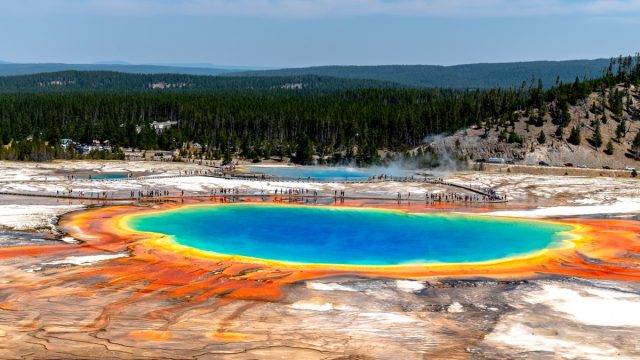
With her purple mountains majesty and amber waves of grain, the United States is easily one of the most geographically diverse countries in the entire world. It’s sandwiched between two massive ocean coastlines and stretches from 20,000 feet (Alaska’s Denali) to nearly 300 feet below sea level (Death Valley). It’s home to bogs, deserts, mountainscapes, forests, and plains, much of which is protected by our beloved National Parks.
So, if you live in the U.S., you don’t need to travel far to see an absolutely stunning, once-in-a-lifetime natural wonder of the world. In fact, we have at least 8 amazing marvels of nature right here in the preserved areas of U.S. National Parks. From a massive glacier in Alaska to molten lava tubes in Hawaii and the most surreal canyons in Utah, read on to find the next best natural wonder that should be on your must-see bucket list.
READ THIS NEXT: 11 U.S. National Parks You Can Do in a Day
1. Grand Canyon: Grand Canyon National Park
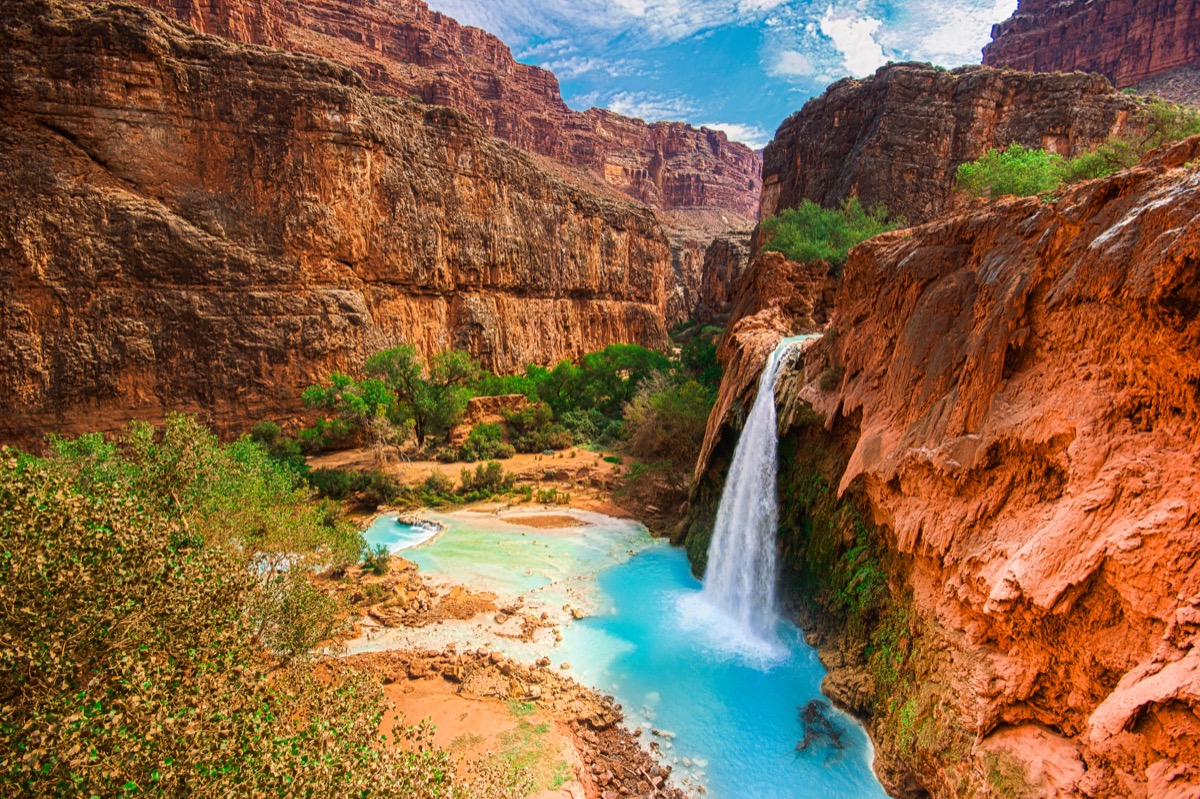
Each year, roughly 6 million people venture to Grand Canyon National Park from across the globe in order to see the headlining event. This vast geographical wonder is a sight to behold, and there’s nothing quite like it in the entire world.
With exposed rock layers representing billions of years of the Earth’s history, it’s a whopping 277 miles long and plunges over a mile deep. Visitors can come just to see, or hike down into the canyon to appreciate its beauty from another vantage point.
2. Lava Tubes: Hawaii Volcanoes National Park

No doubt Hawaii is a magical geographic wonderland with its sparkling idyllic shorelines, lush forests, and volcanic activity. For the latter, visitors must pencil in a visit to Hawaii Volcanoes National Park, which is famous for its captivating lava tubes and gives parkgoers a first-row seat to the raw power of volcanic activity.
The lava tubes are underground passageways (referred to as pyroducts) that are formed by the flow of lava.
3. Delicate Arch: Arches National Park
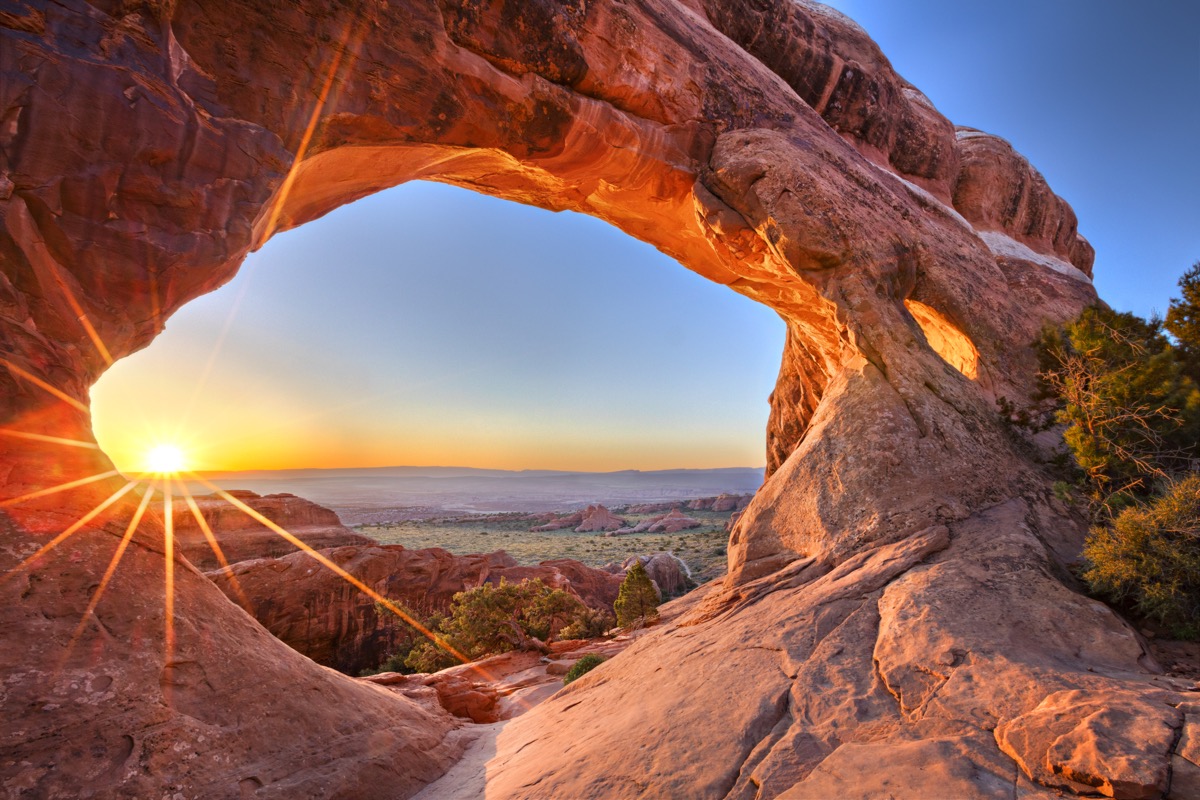
Southern Utah is ripe with spellbinding natural wonders, and the Delicate Arch tucked inside of Arches National Park is certainly one of the coolest. It dates back to the Jurassic period—more than 150 million years ago—and is made from sandstone.
It got its shape from years of wind, water, and frost erosion, which has created a rugged 52-foot-tall arch. The park itself is riddled with arches just like this—about 2000, in fact!
READ THIS NEXT: The 7 Worst Tourist Traps to Avoid in the U.S.
4. Bryce Canyon Hoodoos: Bryce Canyon National Park
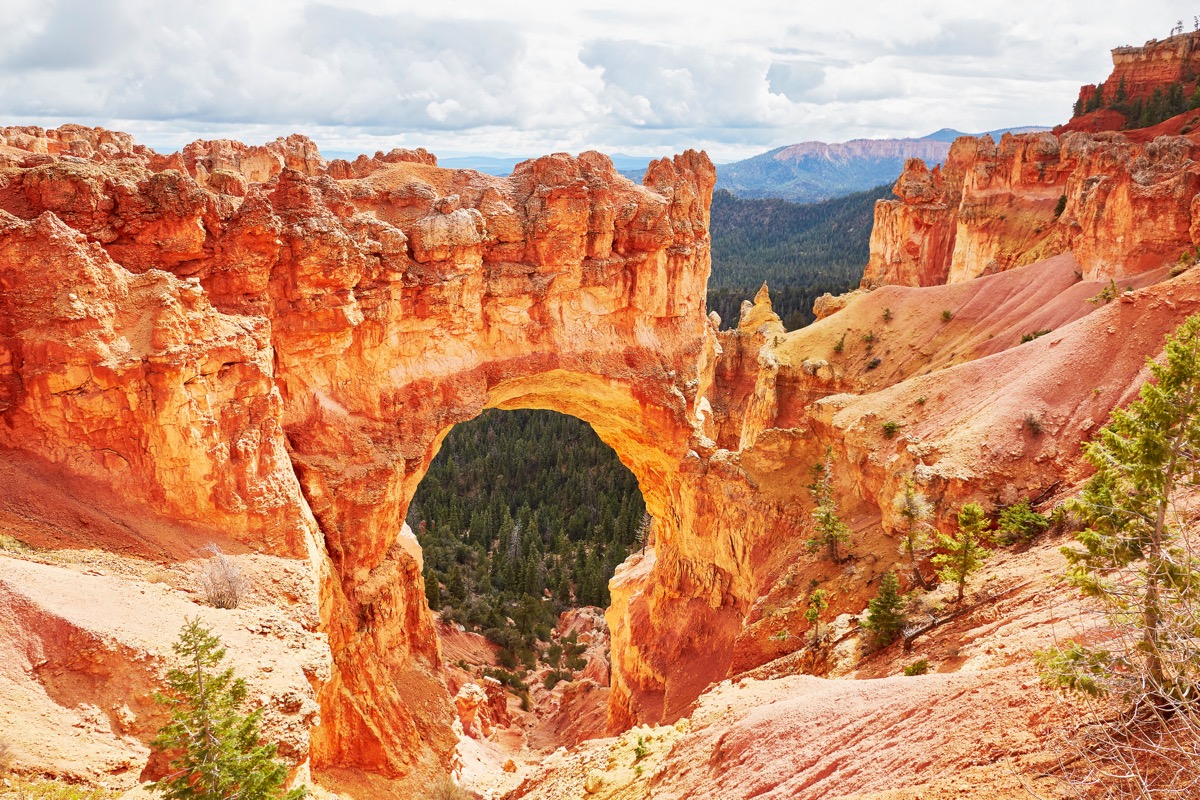
While Arches National Park dazzles with countless curved arches, Bryce Canyon National Park (about 4 hours away) impresses with its otherworldly orange-hued hoodoos.
Thousands of thin rock spires shoot up from the Earth in a bewildering spectacle that doesn’t seem real. The formations are created by erosion, as well, and the park is home to 12 hoodoo amphitheaters
5. Mammoth Cave: Mammoth Cave National Park
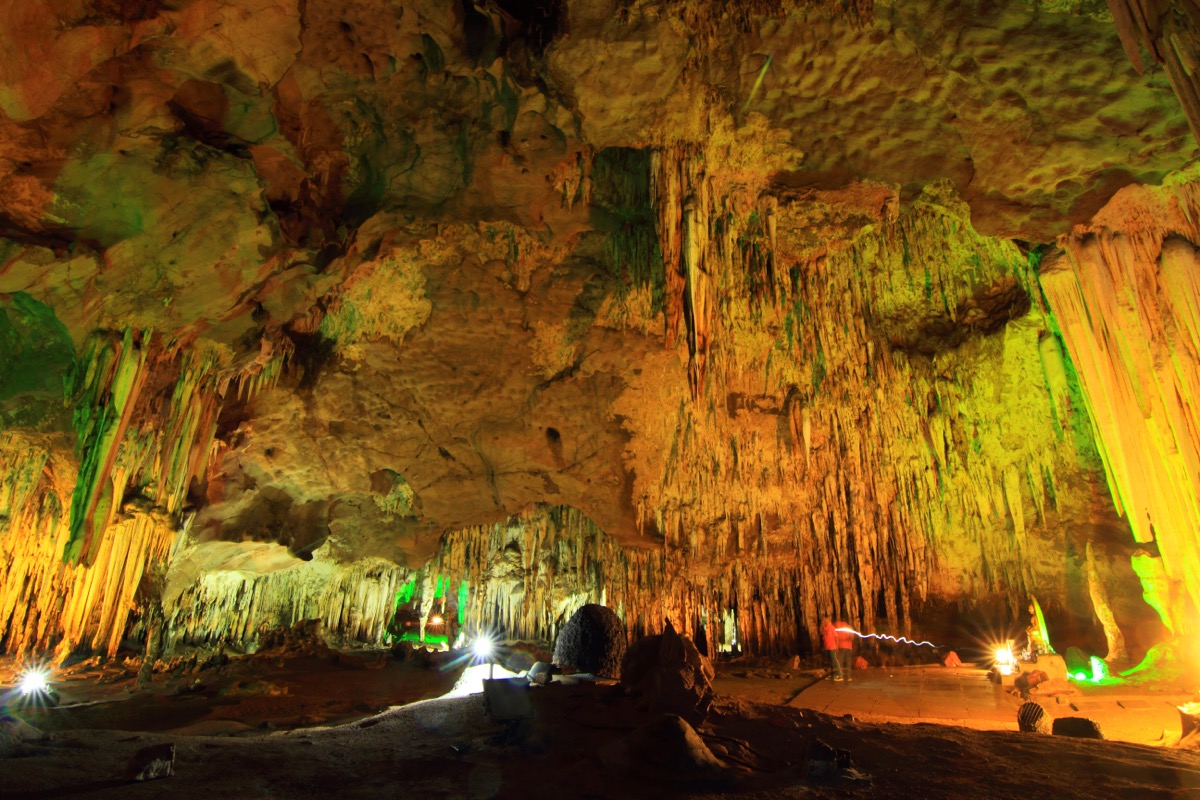
Located in the south-central part of Kentucky you’ll find Mammoth Cave National Park, which is named after the main attraction. You might think of moonshine and derbies when Kentucky comes up, but this beautiful state boasts one of the most vast and complex cave systems in the United States!
Mammoth Cave boasts over 400 miles of explored passageways and is considered a UNESCO World Heritage Site. A permit is required to enter the cave, and ranger-led tours are offered throughout the year.
6. Grand Prismatic Spring: Yellowstone National Park
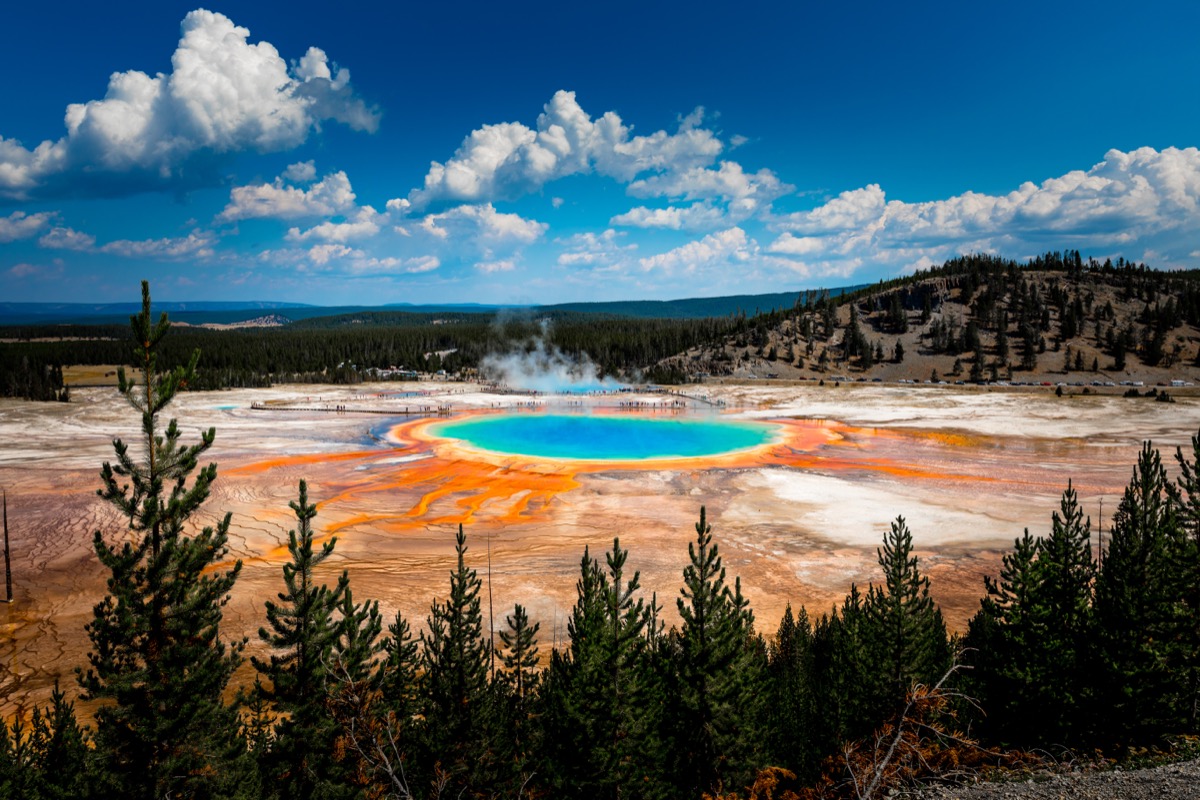
As impressive as the pictures are of The Grand Prismatic Spring—located southwest of Gardiner, Montana in Yellowstone National Park—nothing compares to beholding it with your own eyes. Also referred to as Rainbow lake, its steaming waters reflect a spectrum of mesmerizing hues, including deep blue, bright yellow, orange, and green.
You can get up close to the lake via a boardwalk, but the best view is seen at The Grand Prismatic Overlook, which is a quick and easy hike accessible from the Fairy Falls parking lot.
7. Old Faithful: Yellowstone National Park
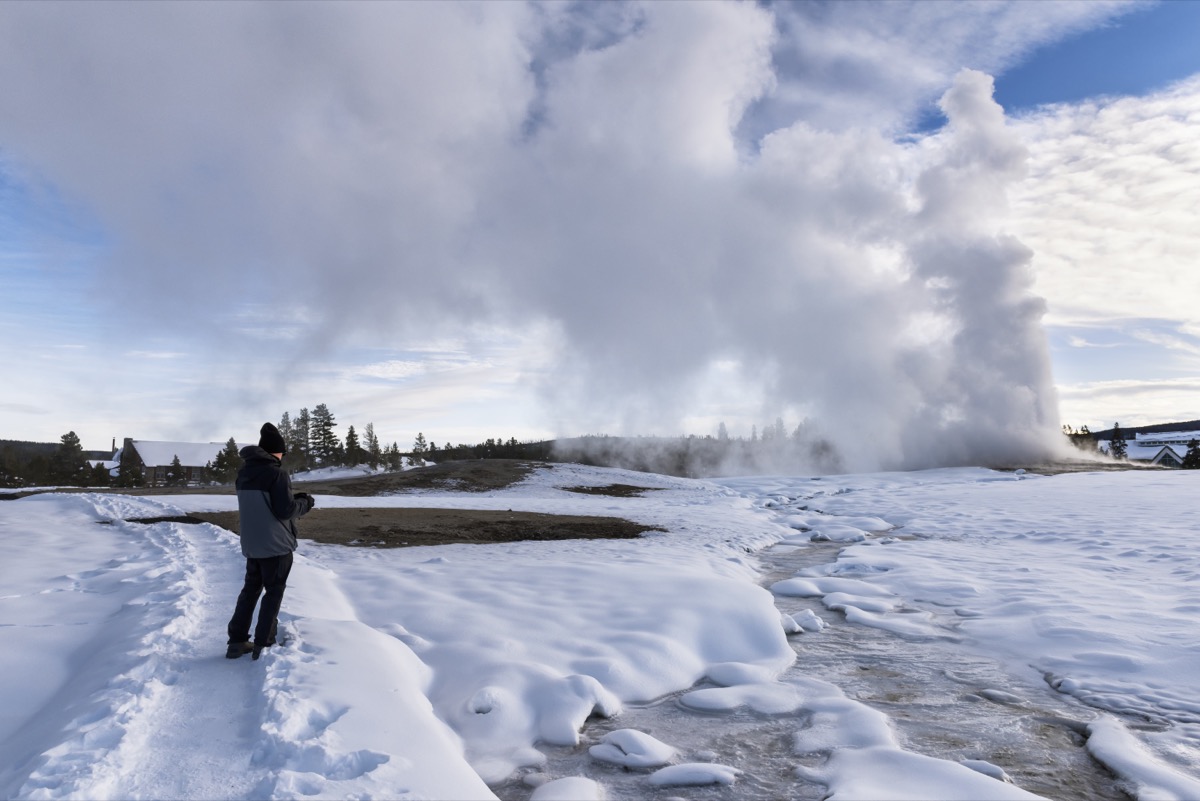
While you’re at Yellowstone, you can’t turn around and leave without stopping by Old Faithful, a geyser that received its name because of its predictable eruption. Not only does this giant geyser reliably go off every 90 minutes, but the stream of hot water it emits is also quite impressive.
Crowds go slack-jawed in wonder as 4,000 to 8,000 gallons of water shoot as high as 60 feet into the air.
READ THIS NEXT: The 12 Best U.S. Cities for Outdoor Adventures
8. Hubbard Glacier: Wrangell–St. Elias National Park and Preserve
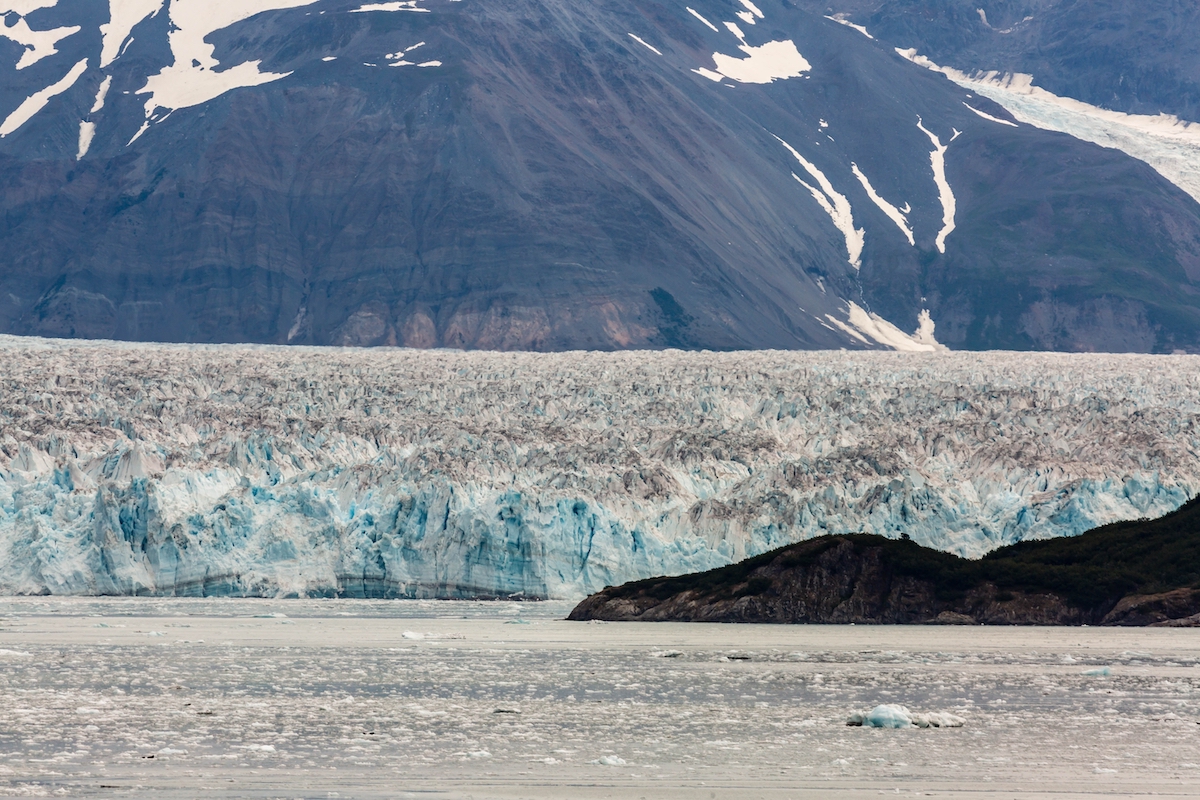
Names like Yellowstone and Grand Canyon are part of the American Lexicon, but did you know that Wrangell–St. Elias National Park and Preserve is actually the largest national park in the country?
Located in Alaska, it spans 13.2 million acres and features habitats ranging from temperate rainforest to tundra. It’s beautiful through and through, but one of its most impressive sites is the Hubbard Glacier, which is 76 miles long, seven miles wide, and 600 feet tall.